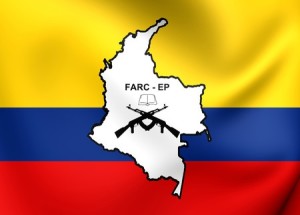Vengeance Belongs to God

The Islamic State (ISIS) is reigning destruction on archeological treasures they deem to be sacrilegious. In 2014, they destroyed what was said to be the tomb of Jonah. The tomb itself was inside a Sunni mosque, the Mosque of the Prophet Yunis (Jonah). The site has some religious significance to Christians and Moslems. Jonah is considered to be a prophet by Christianity, Islam and Judaism. A witness to the destruction of the mosque and tomb said: “They first stopped people from praying in it, they fixed explosive charges around and inside it and then blew it up in front of a large gathering of people.” The site was even said to have once held the remains of the whale that swallowed Jonah. Well, at least one of its teeth.
You can see a video of the explosion in an article by NPR. Towards the end of the short video, you can hear a man saying in Arabic, “No, no, no. Prophet Jonah is gone. God, these scoundrels.” The militants kept locals away from the mosque and closed the roads up to 500 meters away from the shrine while they rigged the shrine with explosives. The destruction was said to be even drawing criticism from Sunni allies of ISIS. Reporting for NPR, Leila Fadel said: “It may cause a deep rift in the uneasy alliances the Sunni extremist group has made with other Sunni fighting groups.”
The mosque is in the town of Mosul, Iraq’s second-largest city. And if you are wondering why a tomb alleged to be that of Jonah would be in Mosul, you should know that Mosul is also near the site of Nineveh, the ancient capital of the Assyrian Empire. “Now the word of the Lord came to Jonah the son of Amittai, saying, ‘Arise, go to Nineveh, that great city, and call out against it, for their evil has come up before me” (Jonah 1:1-2).
The story of the Prophet Yunis in Islam is different than the story familiar to Christians and Jews from the book of Jonah. What follows is from the website Islam 101. The Prophet Yunis, has two additional surnames: “Dhun-Nun” (Lord of the Fish) and Sahibil-Hot” (Companion of the Fish). After he became a prophet, he was sent to Nineveh to preach the true faith of God. But its people were arrogant and conceited; they led sinful lives. Although he tried his best to reform them, they turned a deaf ear to his advice and warnings. He became disgusted, flew into a rage, and invoked Allah’s wrath on the people of Nineveh.
Without waiting for further instructions from Allah, he left Nineveh. He went to the sea and took passage on a boat, and like the biblical story the boat was caught in a storm. The sailors, holding him responsible for their misfortune, wanted to throw Prophet Yunis into the sea, but the passengers initially opposed their plan. Instead they drew lots, and the name of Prophet Yunis came out. So then he was thrown into the sea for the safety of the boat and swallowed by a great fish.
Now in extreme distress, Yunis realized he was suffering because of his dereliction of duty as a prophet. He repented and supplicated himself to Allah. His repentance was accepted and he was delivered ashore. There he was provided the shelter of a spreading plant. When he had regained his health, he was commanded to go back to Nineveh and fulfill his mission. This time the people of Nineveh repented and followed their prophet. And the result was they had a new lease on life.
Gradually the people of Nineveh again adopted evil ways of life. They indulged in idol-worship and debauchery. Eventually they were destroyed by the Scythians. The Prophet Yunus (peace be upon him) died in Nineveh and was buried there. According to the story of some of the historians his tomb is in the village Halmol about ten miles away from Hebron.
The above-mentioned alternate site for the Tomb of Yunis is near Hebron, in the modern West Bank. According to Stephen Vicchio in Biblical Figures in the Islamic Faith, it is part of a site known as “The Cave of the Patriarchs.” See Genesis 25:9. In Islam, Ibrahim (Abraham) purchased the land, “and a number of biblical prophets are said to be buried there.” There is still yet another site proposed as the tomb of the Prophet Yunis in el Mesched, a few miles north of Nazareth. Mesched is the ancient site of Gath-Hepher, said to be the birthplace of Jonah. Contemporary Judaism and Christianity hold to Gath-Hepher as the birthplace for Jonah/Yunis.
So why destroy a tomb and mosque revered as the burial site of one of Islam’s prophets? An Assyrian temple, a Christian monastery and a church once stood on the site before the mosque was erected during the time of the Muslim conquest in the middle of the first millennium. There is a long history of Christian tradition in Iraq. According to church tradition, Christianity was introduced to the region now called Iraq by the apostles Thomas and Thaddeus.
The Monastery of Mar Behnam , founded in the 4th century, about 20 miles away from Mosul, was destroyed by ISIS on March 19, 2015. Joel Baden and Candida Moss, both religion professors, reported in their blog for CNN that ISIS refused to let the monks take any of their relics or manuscripts, some which dated back over 1,400 years. They said despite its antiquity and rich tradition, Christianity in Iraq is on the brink of extinction.
The heirs to those who first discovered the tomb of Jonah, and those who helped to keep Greek philosophy alive in the medieval period, are being ejected from their homes and from a land they have held sacred for centuries. This is the face and reality of Christian persecution.
But Mark Movsesian, writing for First Things, had a different take. He said that to see why ISIS destroyed the tomb, you have to understand something about the version of Islam it holds to. “ISIS is part of the Salafi movement, a branch of Sunni Islam that seeks to return to the practices of the earliest Muslims—the salaf—who lived at the time of the Prophet Mohammed and just after.” They reject the subsequent developments in Islam since that time as ‘pagan’ innovations that adulterated the faith. They oppose the veneration of the graves of Islamic prophets, which is most frequently associated with Sufi Islam.
So Movesesian believes we should see ISIS’s destruction of the tomb of Jonah as an attack at directed at other Muslims, not Christians. But ISIS hasn’t stopped there. In April of 2016 it was confirmed by National Geographic that ISIS had destroyed the Mashki and Adad Gates at the ancient site of Nineveh. You can see pictures of the reconstructed Adad Gate, now destroyed, here. The extremism of ISIS has led to the formation of a coalition of Muslim nations to fight against terror done in the name of Islam.
In addition to Saudi Arabia, the coalition will include Jordan, the United Arab Emirates, Pakistan, Bahrain, Bangladesh, Benin, Turkey, Chad, Togo, Tunisia, Djibouti, Senegal, Sudan, Sierra Leone, Somalia, Gabon, Guinea, the Palestinians, Comoros, Qatar, Cote d’Ivoire, Kuwait, Lebanon, Libya, Maldives, Mali, Malaysia, Egypt, Morocco, Mauritania, Niger, Nigeria and Yemen.
When reading about this growing opposition to ISIS and their tactics among its geographic and religious neighbors, I was struck by parallels between ISIS and Assyria. Like Assyria, ISIS has incurred the wrath of not only of the people they conquered, but other nations as well. Reflections made by the historian Simon Anglim about Assyria could easily be applied to ISIS: “Though the Assyrians and their army were respected and feared, they were most of all hated.” When the region of the over-extended Assyrian Empire began to rebel, their struggles were not just for freedom, but for revenge.
Assyria practiced what could be called a cultural ‘scorched earth’ policy of relocating the political and cultural elites of the lands they conquered. As we described above, ISIS has systematically practiced a similar cultural policy in the areas they control. Ironically, despite their bloodthirsty empire-building practices, the ancient Assyrians are well known today for the grandeur of their capital city, Nineveh—the remains of which ISIS is systematically destroying.
In 612 BCE Nineveh was sacked and burned by a coalition of nations. We haven’t yet seen the destruction of ISIS, but the political storm clouds of its doom do seem to be forming. Looking beyond the book of Jonah in the Bible to that of another prophet, Nahum, we find a judgment oracle against Nineveh that can be easily applied to ISIS.
Nineveh is mentioned in other passages of the Bible besides the book of Jonah. In fact, the entire book of Nahum is a prophetic judgment of the impending fall of Nineveh. Biblical scholars with a high view of Scripture date the writing of Nahum to just before the fall of Nineveh in 612 BCE. The striking parallels between the fall of Nineveh and Nahum’s prophecy have led some to conclude the book to have been written after its destruction. In his commentary on Nahum, Kenneth Barker said: “History soon played out the threats Nahum so vigorously offered.” Consider how these passages might apply to the future of ISIS and the peoples it has conquered:
Thus says the Lord, “Though they are at full strength and many, they will be cutdown and pass away. Though I have afflicted you, I will afflict you no more. And now I will break his yoke from off you and will burst your bonds apart.” (Nahum 1:12-13)
Behold, I am against you, declares the Lord of hosts, and I will burn your chariots in smoke, and the sword shall devour your young lions. I will cut off your prey from the earth, and the voice of your messengers shall no longer be heard. (Nahum 2:13)
But there is a two-edged message for us in Nahum when applying it to the modern situation with ISIS. God calls us to care for the needy of the world and work to correct oppression. We ARE CALLED to the humanitarian aide required as a consequence of their actions, even taking in refugees. While we can easily point the finger of guilt at ISIS, as Nahum did with Nineveh, God calls us to an additional perspective. Vengeance is best left in the hands of God. There cannot be ‘an eye-for-an-eye’ response to the atrocities of ISIS. In his concluding paragraph, Barker said:
Those who read the Book of Nahum should not miss the point that God cares for the weak and needy of the world and is working in history to correct oppression. Let us make sure that we recognize God’s work and seek to correct oppression and participate in the work of God in his world. For us who read the Book of Nahum today, a strong message comes through. We can easily stand with Nahum and point the finger of guilt at our enemies. We quickly volunteer for God’s army, hardly able to wait for his call to battle against the hated enemy. God calls us to another listening post as we read Nahum. He calls us to stand with the court of the king of Nineveh and listen to God’s description of who we are in his sight. He calls us to take off our battle uniforms and watch God at work. “We must never forget that the whole Book of Nahum is a celebration of divine, not human, action. Nahum leaves vengeance in the hands of God.”
* * * * *
In 2022, as I re-read and reflect on these words written six years ago, I am struck with the parallels between Russian terrorism in Ukraine, ISIS, and Assyria. May the prophetic judgement against Assyria soon become fulfilled against Russia!

